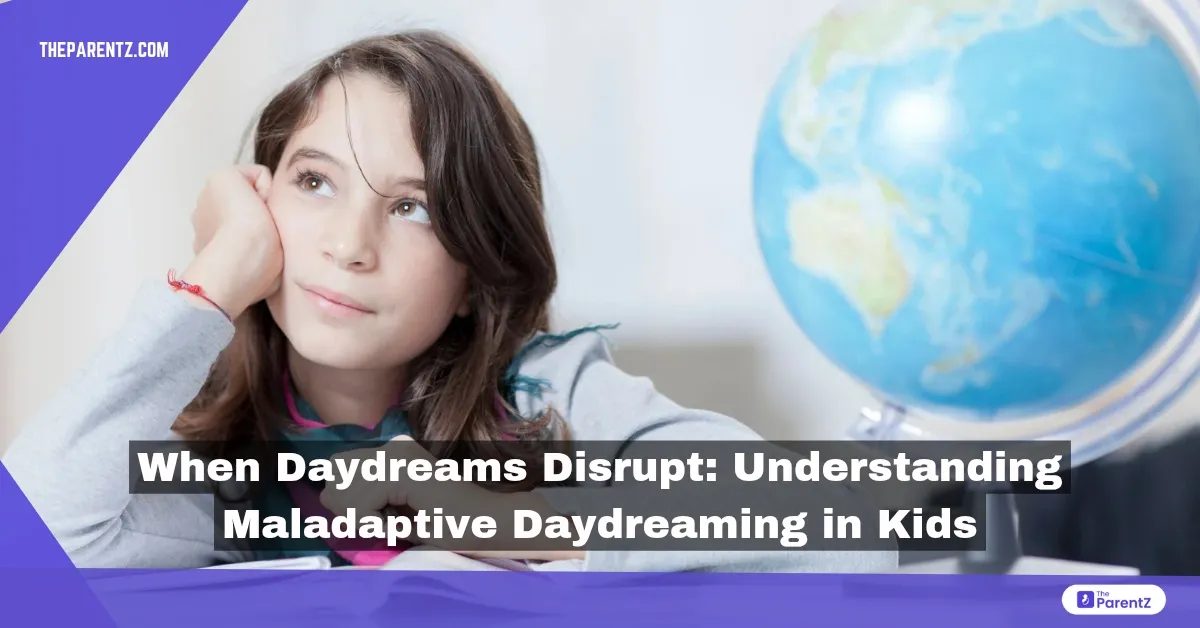Daydreaming is something we all do. It’s that moment when you drift off during a boring class or imagine yourself as a superhero saving the day. For most kids, daydreaming is harmless and often even fun. But what happens when daydreaming goes too far?
Imagine a world so vivid, so captivating, that reality starts to fade into the background. For some children, daydreaming isn't just an occasional mental wandering – it's an all-consuming experience that can hijack their lives, relationships, and potential. What begins as an innocent escape can transform into a complex psychological pattern known as Maladaptive Daydreaming (MD), a phenomenon that's capturing attention across social media and mental health circles.
What is Maladaptive Daydreaming?
Imagine this: You’re sitting in class, and instead of listening to the teacher, you’re lost in a vibrant world where you’re the star of an epic adventure. Sounds fun, right? But what if that daydream lasts for hours? What if it starts to interfere with your homework, friendships, and even family time? That’s maladaptive daydreaming.
Maladaptive daydreaming is when someone gets so caught up in their daydreams that it disrupts their daily life. Kids who experience MD might find themselves creating elaborate stories in their heads, often filled with exciting plots and characters. While it can feel like a great escape, it can also lead to feelings of guilt or frustration when they realize they’re missing out on real-life experiences.
How is MD Different from Normal Daydreaming?
While most people occasionally drift off into daydreams, Maladaptive Daydreaming goes much deeper. Children with MD might:
- Spend hours lost in incredibly detailed, immersive fantasy worlds
- Create complex narratives with intricate characters
- Physically act out their daydreams (like pacing or making facial expressions)
- Feel intense emotional connections to their imaginary scenarios
- Struggle to focus on real-world tasks and responsibilities
A Scenario to Understand Maladaptive Daydreaming
Let’s take a look at Emma, a 10-year-old girl who loves reading fantasy books. Emma often imagines herself as the main character in her favorite stories. At first, this seems harmless—she enjoys creating magical worlds where she can be brave and adventurous.
However, Emma starts to spend more time daydreaming than paying attention in class. She finds herself daydreaming during lunch while her friends are chatting and laughing. When she comes home from school, she forgets to do her homework because she’s too busy imagining her next adventure. Emma feels guilty because she knows she should be focusing on her studies, but the allure of her fantasy world is just too strong.
Emma’s parents notice that she’s been struggling with schoolwork and seems distant during family dinners. They want to help but aren’t sure how to approach the situation.
Why Does Maladaptive Daydreaming Happen?
Maladaptive daydreaming often arises as a way to cope with stress or anxiety. Kids like Emma may turn to their imaginations when they feel overwhelmed by school pressures or social situations. It’s important to understand that this isn’t just “daydreaming” anymore; it’s a way for them to escape from reality.
Common Triggers
- Stressful Environments: If school feels overwhelming or if there are issues at home, kids might retreat into their minds.
- Social Anxiety: Children who feel shy or nervous around others may prefer their imaginary worlds over real-life interactions.
- Creative Minds: Some kids have vivid imaginations and may be more prone to getting lost in their thoughts.
The Impact on Children
For children experiencing MD, the consequences can be significant:
- Academic performance may suffer due to inability to concentrate
- Social relationships can become strained
- Personal development might be hindered
- Increased feelings of shame or guilt about their daydreaming
- Potential development of anxiety or depression
Signs Parents and Educators Should Watch For
Recognizing MD early can make a tremendous difference. Some red flags include:
- Spending excessive time in elaborate fantasy scenarios
- Difficulty completing homework or participating in class
- Minimal engagement in real-world social interactions
- Repetitive movements or behaviors while daydreaming
- Emotional distress when interrupted from daydreaming
How Can Parents Help?
If you suspect a child is struggling with MD, compassionate support is important:
1. Open Up the Conversation
Start by talking to your child about their daydreams without judgment. You might say something like:
“Hey Emma, I’ve noticed you’ve been really into your stories lately! I think that’s amazing! Can you tell me more about what you’re imagining?”
This approach encourages your child to share their feelings without feeling ashamed or embarrassed.
2. Set Boundaries
Help your child create a balance between daydreaming and real-life responsibilities. For example:
“Let’s set aside some time for your daydreams after you finish your homework. That way, you can enjoy both!”
This helps them understand that while imagination is valuable, responsibilities also matter.
3. Encourage Healthy Outlets
Suggest activities that allow your child to express their creativity without losing touch with reality:
- Writing: Encourage them to write down their stories instead of just imagining them.
- Art: Drawing or painting can help them express their fantasies visually.
- Sports or Hobbies: Engaging in physical activities can provide a healthy distraction from excessive daydreaming.
4. Seek Professional Support
If maladaptive daydreaming significantly impacts your child’s life—like Emma’s struggles with school—consider seeking help from a mental health professional experienced in dealing with such issues. They can offer strategies tailored specifically to your child’s needs.
Understanding Each Other
As parents and kids navigate this journey together, it’s vital to foster an environment of understanding and support. If you’re a kid reading this, remember that it’s okay to dream big—but it’s also important to stay connected with the world around you.
For parents, recognizing that maladaptive daydreaming is not just “daydreaming” but a complex emotional response can help you approach the situation more compassionately. By working together, both parents and children can find ways to enjoy imagination while staying grounded in reality.
It's important to remember that Maladaptive Daydreaming is not a choice or a character flaw. It's a complex psychological response that requires understanding, patience, and professional support.
Conclusion
Maladaptive daydreaming can be a challenging experience for both kids like Emma and their parents. By fostering open communication, setting healthy boundaries, encouraging creative outlets, and seeking professional help when needed, families can navigate this phenomenon together. Remember, it’s all about balance—embracing creativity while staying connected to the real world around us!








Be the first one to comment on this story.